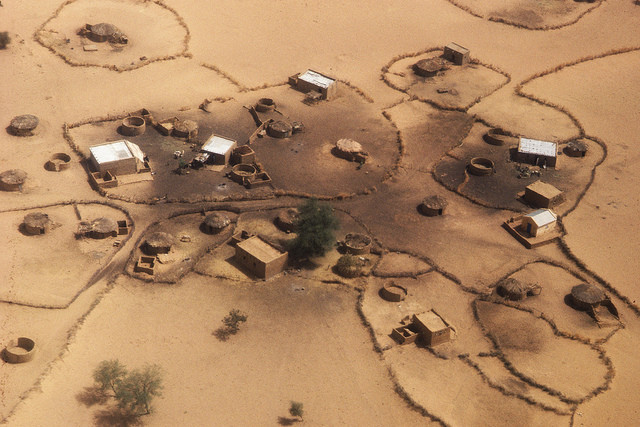-
Climate, Conflict, and Refugees: Examining the Impact of Environmental Change on Human Security
June 26, 2017 By Arundhati Ponnapa
“There’s a long list of crises that can have a natural resource base,” said Anne C. Richard, former assistant secretary of state for population, refugees, and migration, at a Stimson Center panel on June 13, 2017, on the impacts of climate change on human security and mobility. The panelists included Kelly McFarland of Georgetown’s Institute for the Study of Diplomacy (ISD), Rod Schoonover of the National Intelligence Council, and Sally Yozell, director of Stimson’s Environmental Security Program.“The people hit hardest are the ones that can’t move,” said McFarland, stressing the need to collect data and plan for long-term environmental changes and potential crises. He presented a new working group report from ISD that outlines the challenges of climate-related migration and offers 10 guiding principles for optimizing adaptation and resilience-building tools, such as assessments of the needs of sending and receiving communities.
One of the challenges is the lack of a legal definition for people displaced by climate change: “It is hard to come up with who exactly is an environmental migrant, because of the fact that there are other drivers involved in getting them to move,” said McFarland. While the panelists agreed that global consensus is required on this issue, Schoonover suggested that global governance structures like multilateral treaties “seemed to work better in the last century.”
“Population does fall between the cracks,” said Richard, calling for looking at climate change and displacement in a more integrative, holistic manner, with an emphasis on planning, resilience-building, and local community responses. Transdisciplinary approaches can address the overlap between issues such as urbanization and rising sea levels: “More and more refugees live in cities. In fact, the majority of refugees, like the majority of people, live in cities,” said Richard.
Schoonover described the burgeoning security risks as “a stew of problems,” citing potential pressures on U.S. homeland security, threats to American allies, and limits on diplomatic or political capacity. “In some cases, humanitarian issues writ large become security issues when they bring in the U.S. military and perhaps strain defense forces,” particularly as potential crises emerge when environmental degradation and population growth tax cities such as Lagos or nuclear states such as Pakistan.
Schoonover pointed out that developed countries with aging populations and physical space could house migrants, and McFarland recommended that policymakers explore offering economic incentives to receiving communities. “Migration does not have to be a dirty word; migration can be a positive experience,” said Richard.
Read More:
- The links between climate, migration, and national security
- Words of caution on “climate refugees”
- Navigating the complexity of climate, migration, and conflict
Photo: Mauritania Village Struck by Drought, August 2011, courtesy of United Nations Photo
 A Publication of the Stimson Center.
A Publication of the Stimson Center.



